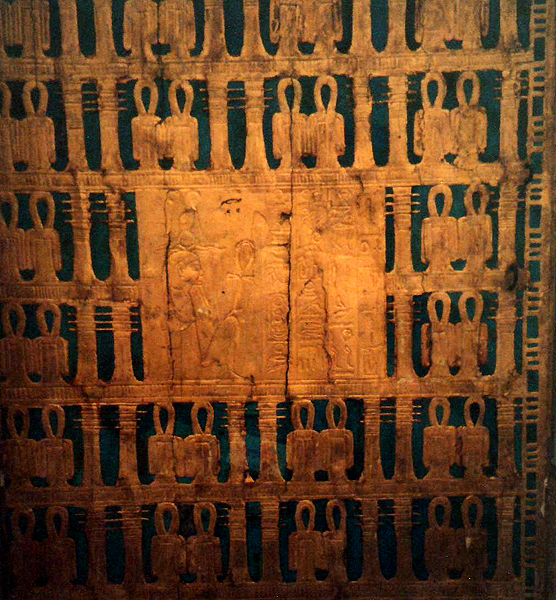
Outer Shrine Of Tutankhamun
Gilt plaster over wood, with faience inlay.
Egyptian Museum, Cairo.

|
Outer Shrine Of TutankhamunGilt plaster over wood, with faience inlay.
|
The reign of Tutankhamun witnessed a return to normality in Egyptian religion and society after the radical changes made by Akhenaten. Relatively little is known about Tutankhamun - for example, his name is omitted, along with those of Akhenaten, Smenkhkare, and Ay, from the king lists at Abydos and Karnak. A probable son of Akhenaten by Kiya (Akhenaten's second queen), Tutankhamun ascended the throne in his minority. Nine years of age is an often-quoted figure, although a date several years later is also argued. He died after ruling for nine years. His death was unexpected, the cause of death is unknown, and his burial was hasty. Some of the tomb furnishings appear to have been made for another person, but were used for Tutankhamun's burial instead.
Tutankhamun's tomb was twice broken into, soon after his burial; the robbers made off with gold, jewels, and precious oils but did not reach the body of the king. After the tomb was again resealed, its entrance disappeared underneath the stones and debris of the Valley of the Kings. The tomb remained lost for 3200 years, until it was rediscovered by Howard Carter in 1922.
The sarcophagus of Tutankhamun was enclosed by four nested gilt shrines. The largest and outermost shrine, which is pictured here, barely fits the dimensions of the chamber with a foot or two to spare. It has no floor; its walls and roof were assembled in the burial chamber, around the heavy sarcophagus, after the sarcophagus had been moved into place. The shrine is decorated in gold with alternating pairs of djed pillars, symbolizing stability, and tiet knots, symbolizing life. The djed and tiet were associated with Osiris and Isis respectively, making them especially appropriate for funerary symbolism.

|

|

|